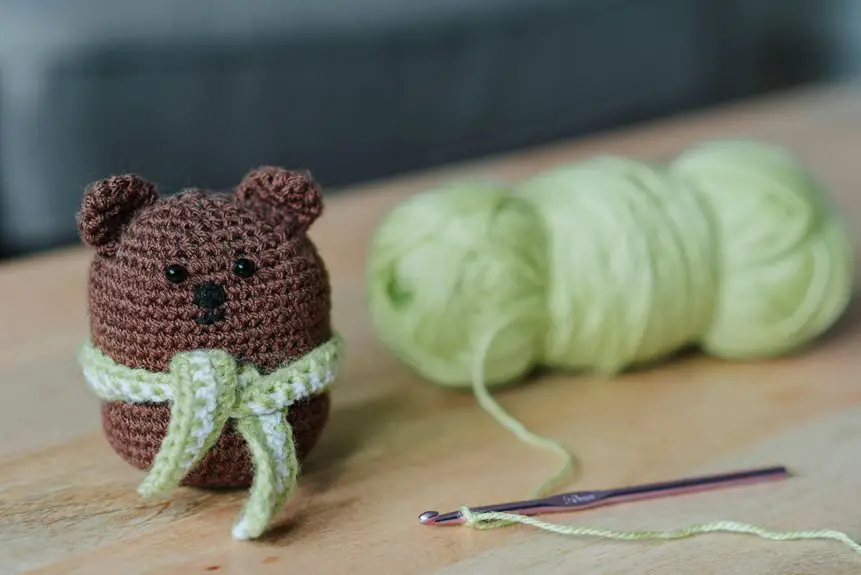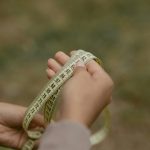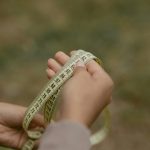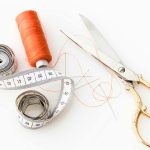When working with gauze fabric, choose fine, sharp needles sized 65/9 or 70/10 to avoid tearing its delicate weave. Use lightweight, high-quality cotton or polyester thread to keep seams smooth without puckering. Avoid heavy needles and thick threads that can damage the fabric. Handle gauze gently to prevent stretching or distortion. If you want to achieve flawless stitching and learn techniques to prevent common problems, exploring more tips can really improve your sewing experience.
Table of Contents
Key Takeaways
- Use fine, sharp needles sized 70/10 or 65/9 to prevent tearing and large holes in gauze fabric.
- Choose sharp or universal needles; slightly rounded points suit gauze with stretch.
- Opt for fine, high-quality cotton or polyester thread to maintain breathability and durability without puckering.
- Avoid heavy or thick threads and denim needles to prevent damaging the delicate, open-weave gauze.
- Silk thread is smooth and strong but can be more expensive; cotton blends well and polyester adds stretch.
Understanding the Characteristics of Gauze Fabric
Gauze fabric stands out for its lightweight, open-weave structure that makes it both breathable and delicate. When you work with gauze, you’ll notice its softness and slight transparency, which adds a unique texture to your projects.
This fabric easily stretches and moves, so you’ll want to handle it gently to avoid distortion. Since the weave is loose, gauze tends to fray around the edges, meaning you must finish seams carefully to maintain durability.
Its airy quality makes it perfect for summer garments or lightweight accessories, but it also means you need to sew with precision to prevent puckering. Understanding these traits helps you adapt your sewing approach, ensuring your final piece looks neat and holds up well.
Choosing the Right Needles for Gauze Sewing
Selecting the right needle plays a crucial role in achieving clean, smooth stitches on delicate, open-weave fabrics. When sewing gauze, you want a needle that pierces without damaging the fabric’s airy structure.
Choose a fine needle size, such as 70/10 or 65/9, which prevents large holes and snags. A sharp or universal needle works best because it can easily penetrate the loosely woven fibers without causing runs or pulls.
Avoid heavy or denim needles that can tear the fabric. Also, consider a needle with a slightly rounded point if your gauze has a bit of stretch; this helps avoid skipped stitches.
Best Thread Types for Gauze Fabric
When working with delicate, open-weave fabrics like gauze, you’ll want thread that’s as lightweight and gentle as your needle choice.
Opt for fine, high-quality cotton or polyester thread, which provides strength without weighing down the fabric. Cotton thread is breathable and blends well with natural gauze, while polyester offers durability and slight stretch, making it suitable for garments needing resilience.
Avoid heavy or thick threads that can cause puckering or damage the fabric’s delicate structure. Silk thread is another excellent option due to its smooth texture and strength, but it can be pricier.
Regardless of the type, choose a thread weight that matches your gauze’s fineness—typically a 60-80 weight thread works best. This balance guarantees your stitches hold firmly without compromising gauze’s soft, airy feel.
Tips for Sewing Gauze Without Damage
Choosing the right needle and thread sets a strong foundation, but handling the fabric carefully during sewing is just as important to prevent damage. When working with gauze, always use a fine, sharp needle—like a size 70/10—to avoid snagging.
Avoid pulling or stretching the fabric as you sew; let your machine feed the fabric naturally. Pin sparingly and place pins perpendicular to the seam to reduce holes. Use short stitches to maintain fabric integrity, and consider stabilizing the fabric with tissue paper underneath to keep it from shifting or puckering.
Finally, press seams gently with a low-heat iron and a pressing cloth to prevent distortion. Following these steps helps you sew gauze smoothly without tearing or warping the delicate material.
Troubleshooting Common Gauze Sewing Issues
Although gauze is lightweight and breathable, it can be tricky to sew without running into common issues like puckering, skipped stitches, or fabric distortion. When you face these problems, check your needle, thread tension, and stitch length. Using a fine needle and lightweight thread helps prevent damage. Adjust your machine settings for a looser tension and longer stitches to accommodate the fabric’s delicate nature.
| Issue | Cause | Solution |
|---|---|---|
| Puckering | Tight tension or small stitches | Loosen tension; use longer stitches |
| Skipped stitches | Dull needle or incorrect type | Replace with a new, fine needle |
| Fabric distortion | Pulling fabric while sewing | Guide fabric gently, avoid stretching |
Following these tips will make your gauze sewing smoother and more precise.
Frequently Asked Questions
Can Gauze Fabric Be Machine Washed Without Shrinking?
You can machine wash gauze fabric, but to avoid shrinking, use cold water and a gentle cycle. Don’t overload the machine, and air dry it flat or hang it to keep its shape and size intact.
What Are the Best Stitch Types for Gauze Fabric?
You’ll want to use narrow, straight stitches like a straight stitch or a small zigzag stitch to prevent puckering. These stitches hold gauze securely while allowing its delicate texture to breathe without damage.
How Do I Store Gauze Fabric to Prevent Damage?
Like a delicate butterfly, your gauze fabric needs gentle care. You should store it flat or rolled, away from direct sunlight and moisture, in a breathable container to keep it fresh and damage-free for your next project.
Are There Specific Brands Recommended for Gauze Sewing Supplies?
You’ll find brands like Gutermann and Aurifil highly recommended for sewing gauze; they offer fine threads and sharp needles that handle delicate fabrics well. Don’t forget to check specialty stores for gauze-specific supplies too!
Can Gauze Fabric Be Dyed After Sewing?
Ever thought about dyeing gauze after sewing? You can, but be careful—dye might bleed or distort stitches. Test a small sample first, so you don’t ruin your project. Wouldn’t you want to avoid surprises?
- Does Chiffon Fabric Stink - July 15, 2025
- Does Chiffon Fabric Affect the Economy - July 15, 2025
- Does Cotton Fabric Have a Nap - July 15, 2025







